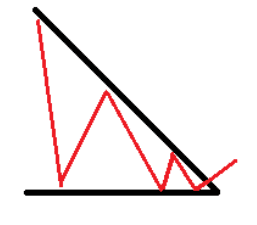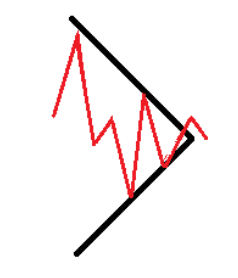Our partner, XM, lets you access a free demo account to apply your knowledge.
No hidden costs, no tricks.

Technical analysis is an integral part of trading on the forex market. Traders use a wide variety of indicators to find patterns on the chart and identify potential entry and exit points for their traders.
One such popular chart pattern is called the “triangle”. The triangle is a continuation pattern that shows the reinforcement of an existing trend after a short period of consolidation.
There are three types of triangle patterns - ascending, descending, and symmetrical.
These patterns help identify a slowdown in a market trend and indicate whether it will continue upwards, downwards or sideways.
Triangle pattern strategies are especially popular for major currency pairs, which are more liquid and pattern formations are stronger.
Traders enter the market when the price breaks out of the triangle pattern, which marks the point when the price is expected to swing up or down.
The principle behind the triangle strategy is that markets exhibit repetitive patterns and by recognizing these patterns, traders can make informed decisions about when to enter or exit positions, set stop-loss orders, and manage risk effectively.
To understand how the triangle trading strategy works, it is important to understand that there are three distinct scenarios and triangle patterns that indicate a bullish or bearish trend, or market indecision.
These indicators are crucial in understanding what part of the trend has already formed and where the price might be headed in the near future. While triangle patterns might not always generate exactly correct signals, they can nonetheless be useful in visualizing trend boundaries.



Now, we can look at when traders enter positions after a triangle pattern has formed on a price chart:
The triangle pattern strategy comes with its fair share of advantages and disadvantages, which are important to consider when applying the technical patterns on a chart.
Our partner, XM, lets you access a free demo account to apply your knowledge.
No hidden costs, no tricks.
An ascending triangle in trading is a bullish continuation pattern characterized by a horizontal resistance level and an ascending support line. It suggests that buying pressure is increasing and may lead to an upward breakout.
The triangle pattern strategy can be effective when used alongside other technical analysis tools and risk management. Its reliability depends on market conditions and confirmation signals, making it a valuable tool for some traders but not foolproof for all situations.
The triangle trading strategy works by identifying specific chart patterns, such as ascending, descending, or symmetrical triangles. Traders use these patterns to anticipate potential price breakouts. Buy or sell orders are placed near the breakout points, with stop-loss and take-profit levels to manage risk and capture potential gains.